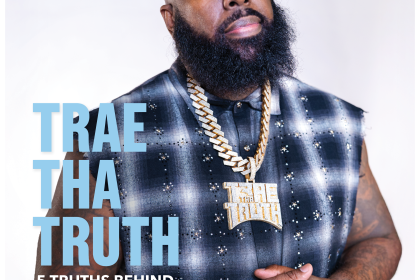The internal tug-of-war between personal success and community responsibility affects countless professionals who feel caught between advancing their own careers and lifting others as they climb. This struggle becomes particularly intense for individuals who grew up in communities where success stories remain rare and the pressure to give back feels both inspiring and overwhelming.
Many high-achievers find themselves questioning whether pursuing their dreams makes them selfish, especially when they witness ongoing challenges in their communities. The guilt associated with personal advancement can create internal conflict that undermines both career progress and community impact efforts.
However, the choice between personal ambition and community service represents a false dilemma. The most effective community leaders often achieve the greatest impact by first establishing their own success, then leveraging that success to create opportunities for others. Understanding how to balance these priorities creates sustainable approaches to building lasting legacies.
Understanding the complexity of dual responsibilities
The challenge of balancing personal ambition with community service reflects deeper questions about success, responsibility, and identity. Many individuals feel torn between competing loyalties—to their own dreams and to the communities that shaped them.
This internal conflict often intensifies as career success grows. Higher income levels, expanded professional networks, and increased visibility create both opportunities and obligations that can feel overwhelming without proper frameworks for decision-making.
The pressure to give back can sometimes overshadow personal goals, leading to decisions based on guilt rather than strategic thinking. This emotional approach often results in scattered efforts that satisfy neither personal ambitions nor community needs effectively.
Recognizing that personal success and community impact can reinforce each other rather than compete represents the first step toward resolving this tension. The most sustainable approaches integrate both priorities rather than treating them as separate, conflicting demands.
Defining your unique legacy vision
- Identify what you’re uniquely positioned to change by examining the intersection of your background, skills, and community needs. Your specific combination of experiences, professional expertise, and personal insights creates opportunities that others cannot replicate.
Consider how your journey from your starting point to current success provides insights that could benefit others following similar paths. The challenges you’ve overcome and lessons you’ve learned represent valuable resources for community members facing comparable obstacles.
Your professional skills often translate directly into community needs. Project management expertise can support nonprofit organizations, financial knowledge can help individuals build wealth, and leadership experience can develop future community leaders.
The key lies in identifying where your natural abilities meet genuine community challenges. This intersection creates opportunities for meaningful impact that feels authentic rather than forced or obligatory.
Discovering your passion-skill intersection points
- Find where your professional expertise naturally aligns with causes you care about to create sustainable community engagement that energizes rather than drains you. This alignment ensures that your giving back efforts feel like extensions of your strengths rather than additional burdens.
If you excel in communication and care about education, consider mentoring students or developing educational content. If you have financial expertise and worry about economic inequality, explore financial literacy programs or small business support initiatives.
The most effective community impact occurs when your contributions leverage your existing strengths while addressing issues you genuinely care about. This natural fit creates enthusiasm that sustains long-term engagement even during busy career periods.
Look for opportunities where your lived experiences add unique value to your professional skills. Your personal story combined with your expertise creates powerful resources for community members who share similar backgrounds or challenges.
Creating structured approaches to sustainable giving
- Schedule regular “legacy time” just as you would important career activities to ensure consistent community engagement without overwhelming your professional responsibilities. This systematic approach prevents community service from becoming an afterthought during busy periods.
Dedicate specific time slots monthly or quarterly to community activities, treating these commitments with the same seriousness as business meetings. This structure creates predictable rhythms that allow for meaningful engagement without career disruption.
Consider seasonal approaches that align with your professional calendar. Teachers might focus community efforts during summer breaks, while accountants might engage more heavily outside tax season. This timing strategy maximizes your availability and effectiveness.
Build community impact activities into your existing routines when possible. If you travel frequently for work, look for volunteer opportunities in different cities. If you attend professional conferences, seek speaking opportunities that benefit community organizations.
Establishing protective boundaries for long-term success
- Set clear limits to prevent burnout while maintaining consistent community engagement because exhausted individuals cannot serve anyone effectively. Boundaries protect both your personal well-being and your ability to contribute meaningfully over time.
Learn to say no to requests that don’t align with your defined legacy vision or that would overextend your capacity. Focused efforts in areas where you can make genuine impact serve the community better than scattered attempts across multiple causes.
Communicate your boundaries clearly to avoid misunderstandings or hurt feelings. Explain your commitment to specific causes and timeframes so that others understand your limitations and can plan accordingly.
Regular self-assessment helps identify when community commitments are interfering with personal goals or when career demands are preventing adequate community engagement. This awareness enables proactive adjustments before problems become overwhelming.
Leveraging success to amplify community impact
- Use your growing influence and resources strategically to multiply your community impact rather than simply adding more activities to your schedule. As your career advances, your ability to create change expands beyond direct service to include advocacy, resource mobilization, and platform sharing.
Higher-level positions provide opportunities to influence organizational policies that benefit community members. Advocating for inclusive hiring practices, supplier diversity, or community partnership programs can create systemic change that affects many people.
Financial success enables strategic philanthropy that goes beyond personal volunteering. Supporting effective organizations financially can often create more impact than equivalent time commitments, especially when your professional skills are highly valuable.
Your professional network becomes a resource for community benefit as you connect community organizations with potential supporters, volunteers, or partners. These introductions can provide sustainable support that extends far beyond your individual contributions.
Overcoming guilt and embracing integrated success
Many individuals struggle with guilt about personal achievements, particularly when family or community members face ongoing challenges. This guilt can undermine both personal success and community impact by creating internal conflict and decision-making paralysis.
Recognizing that your success creates capacity for community impact helps reframe personal achievements as community investments. The resources, skills, and influence you gain through career advancement become tools for lifting others.
Your success story can inspire community members who need examples of what’s possible. Visibility in your achievements demonstrates pathways that others can follow while providing proof that success is attainable from your background.
The most effective community leaders often achieve their greatest impact after establishing their own success. This sequence isn’t selfish—it’s strategic planning that maximizes long-term community benefit over immediate but limited contributions.
Building systems that support both goals
Develop decision-making frameworks that evaluate opportunities based on both personal advancement and community impact potential. This structured approach prevents emotional decision-making that might satisfy immediate guilt but undermine long-term effectiveness.
Create accountability systems that track progress toward both career goals and community impact objectives. Regular review ensures that neither priority overwhelms the other and that you’re making progress in both areas.
Build relationships with others who share similar values and challenges. These connections provide support, accountability, and collaboration opportunities that make balancing both priorities more manageable and enjoyable.
Look for career opportunities that inherently include community impact components. Some roles naturally integrate both priorities, making the balance easier to maintain while advancing both personal and community goals.
Measuring impact beyond immediate results
Effective legacy building requires thinking beyond immediate outcomes to consider long-term ripple effects. The individuals you mentor may go on to mentor others, creating exponential impact that extends far beyond your direct contributions.
Track qualitative outcomes alongside quantitative measures. While numbers matter, stories of individual transformation often better capture the true impact of your community engagement efforts.
Consider how your example influences others in your professional and personal networks. Your approach to balancing success with service may inspire colleagues to engage in similar efforts, multiplying your impact through others’ actions.
Document your journey and lessons learned to help others navigate similar challenges. Sharing your approach to balancing ambition with community service can provide valuable guidance to others facing comparable decisions.
Adapting strategies as circumstances change
Life circumstances, career stages, and community needs evolve over time, requiring flexible approaches to maintaining balance between personal and community priorities. What works early in your career may need adjustment as responsibilities and opportunities change.
Major life events like marriage, parenthood, or career transitions may temporarily shift the balance between personal and community focus. Acknowledge these changes as natural rather than permanent failures to maintain community engagement.
Economic conditions, community crises, or professional opportunities may create temporary imbalances that require adjustment. Flexibility in your approach allows you to respond to changing circumstances without abandoning either priority entirely.
Regular reassessment of your legacy vision ensures that your community engagement remains aligned with your evolving values, skills, and circumstances. This ongoing evaluation prevents stagnation while maintaining authentic commitment to community impact.
Creating sustainable motivation
Connect your community impact efforts to your personal values and identity rather than external expectations or obligations. This intrinsic motivation sustains engagement through challenging periods when external pressures might encourage retreat.
Celebrate successes in both personal and community arenas to maintain enthusiasm for pursuing both goals. Recognition of progress provides energy for continued effort while demonstrating that balance is achievable.
Share your journey with others who understand the challenges of balancing ambition with community service. These relationships provide encouragement, advice, and accountability that support long-term commitment to both priorities.
Remember that your legacy is built through consistent small actions rather than grand gestures. Daily decisions to support community members, share opportunities, or use your influence responsibly create lasting impact over time.
The compound effect of integrated success
Personal achievements and community contributions reinforce each other when approached strategically. Career success provides resources and influence for community impact, while community engagement provides perspective, relationships, and purpose that enhance professional effectiveness.
Your reputation for balancing success with service can become a professional asset that attracts opportunities, partnerships, and team members who share similar values. This alignment creates career advancement opportunities that also support community impact goals.
The skills developed through community service often translate into professional advantages. Leadership experience, cultural competency, and problem-solving abilities gained through volunteer work enhance career prospects while serving community needs.
Building a legacy of integrated success creates a sustainable model that others can follow, potentially inspiring widespread changes in how professionals approach the relationship between personal ambition and community responsibility.


















